We’re exploring the 19 Best songs by The Doors, a band that left a lasting mark on rock history. I’ll discuss the lyrics, meanings, themes, cultural impact, and history behind each song. The Doors were more than just a band; their music resonated with a generation and still inspires listeners today.
From Jim Morrison’s poetic words to their unique sound, these songs tell stories and capture timeless moments. Let’s discover what makes these tracks stand out in the world of rock music!
1. Light My Fire
Light My Fire by The Doors is a compelling exploration of desire and passion. The lyrics, which were mainly written by guitarist Robby Krieger, are about letting go of inhibitions in the flames of passion. The song can be seen as a metaphor for life, where the beginning (orgasm) and the end (death) are indistinguishable.
Light My Fire played a significant role in defining the psychedelic era of the 60s. Its lyricism resonated with listeners across ages, making it a timeless classic that continues to ignite the fire of passion in people’s hearts .
The song is a blend of rock, jazz, and psychedelic elements. It symbolizes the band’s ability to push each other into intense and emotional interaction, showcasing their unique synergy. This blend of genres was a testament to The Doors’ innovative approach to music, helping them carve a niche in the music industry.
2. Riders on The Storm
Riders on the Storm by The Doors is a captivating exploration of journey and introspection. The lyrics loosely draw inspiration from spree killer Billy Cook, adding a chilling undertone. Meanwhile, lines like “girl, you gotta love your man” hint at Morrison’s personal life and his relationship with his girlfriend, Pam Courson.
The song blends existential and environmental themes, suggesting the unpredictability and strangeness of human existence. It paints a picture of life as a storm-ridden journey, where each person is a rider navigating their unique path.
Riders on the Storm is an enduring classic, known for its haunting, atmospheric sound. It remains a beautiful allegory of relationships and personas, encapsulating the essence of The Doors’ music and resonating with listeners even today.
3. The End
The End by The Doors is a multifaceted song with a complex narrative. It initially originated from Jim Morrison’s breakup with an ex-girlfriend, but expanded into a broader exploration of Oedipal themes, symbolizing the death of old ideas and attitudes.
The song reflects Morrison’s interest in poetry and theater, as evident in its dramatic delivery and profound lyrics. It delves into the concept of killing off instilled ideas that are not one’s own, promoting self-worth and empowerment.
“The End” by The Doors is a song that made a significant impact, particularly in its use in the film “Apocalypse Now.” It effectively conveyed the harshness and futility of war. The song became an emblem of the end of an era, symbolizing the farewell to the counterculture of the 60s and setting the stage for the uncertainties of the 70s.
4.L.A. Woman
L.A. Woman by The Doors portrays Los Angeles as a woman that is both alluring and dangerous. The lyrics weave a narrative of the protagonist’s arrival in L.A., exploring the city’s unique energy and its highs and lows. Phrases like “Motel money murder madness / Let’s change the mood from glad to sadness’ ‘ encapsulate the city’s darker aspects—crime and fleeting joy.
The song serves as a reflection on the urban experience and American culture. It captures the dichotomy of love and disgust for the city, symbolizing the protagonist’s complex relationship with L.A.
“L.A. Woman” captures the bittersweet relationship people often have with Los Angeles. It serves as Jim Morrison’s heartfelt farewell to the city before his departure to Paris, marking a significant moment in The Doors’ history. This timeless album beautifully portrays the intricate and contradictory nature of urban life.
5. When the Music’s Over
“When the Music’s Over” by The Doors explores the profound themes of mortality and transcendence through the medium of music. The lyrics convey a metaphorical reflection on the end of life or joy, symbolized by the line “When the music’s over / Turn out the lights.” This highlights the transient nature of existence while showcasing the transformative influence of music.
The song explores the profound connection between art and life, exploring the fleeting nature of both. It highlights the paradox of music as a steadfast companion throughout life, while acknowledging its transient essence, mirroring the transitory nature of our existence.
When the Music’s Over served as an anthem for a generation questioning authority and seeking deeper meaning. Released in 1967, during a time of societal upheaval, the song resonated with the counterculture movement’s quest for authenticity and truth.
When the Music’s Over is a timeless exploration of life’s transience and the eternal quest for meaning.
6. Break on Through (To the Other Side)
Break on Through (To the Other Side) by The Doors is a profound exploration of breaking free from societal norms. The lyrics, “You know the day destroys the night / Night divides the day / Tried to run, tried to hide / Break on through to the other side,” suggest a challenge to conventional perspectives and a desire for liberation.
The song reflects existential philosophy and the counterculture movement’s influences. It emphasizes breaking away from norms and barriers, seen as a metaphor for expanding consciousness, possibly through means like LSD.
“Break on Through (To the Other Side)” embodies the rebellious spirit of the 60s, challenging societal norms and embracing freedom. It invites listeners to explore new perspectives and serves as a timeless anthem of self-discovery.
7. Five to One
Five to One by The Doors is a song with confrontational lyrics that can be seen as a call to action or a reflection of generational conflict. The lyrics, such as “Five to one, baby / One in five / No one here gets out alive, now,” convey a sense of struggle against overwhelming odds and may symbolize the ratio of youth to authority.
The song’s theme revolves around rebellion and the power dynamics between youth and authority. It serves as an anthem for the counterculture movement, promoting resistance against societal norms and established power structures.
“Five to One” encapsulated the defiant spirit of the late 60s, resonating with the era’s unrest and yearning for change. This timeless song symbolized rebellion and the fight against authority, echoing the calls for freedom and transformation.
8. The Unknown Soldier
The Unknown Soldier by The Doors is a profound reflection on the Vietnam War and its toll on humanity. The lyrics emphasize the anonymity and sacrifice of soldiers, reminding us of the impersonal nature of war and the loss of individual lives.
The theme revolves around war, sacrifice, and the anonymity of loss. The song powerfully communicates the harsh realities of war and the often-overlooked individual sacrifices made by soldiers.
The Unknown Soldier is a powerful political statement released in 1968 during a period of intense conflict. It captured the anti-war sentiment of the time, reflecting public disillusionment with the Vietnam War. This timeless piece serves as a reminder of the devastating toll of war and amplifies calls for peace and acknowledgment of individual sacrifice.
9. People Are Strange
People Are Strange by The Doors is a poignant reflection on the feelings of alienation and being an outsider. The lyrics, such as “People are strange when you’re a stranger / Faces look ugly when you’re alone,” depict the sense of isolation and detachment that can be experienced when one feels different or marginalized.
The song’s theme centers around social isolation and the human condition. It highlights the strange nature of the world when seen through the eyes of an outsider, emphasizing the universal experience of loneliness and the desire for acceptance.
“People Are Strange” by The Doors resonated with marginalized individuals during the turbulent 1960s. It became an anthem for those who felt disconnected from society, validating their experiences. This timeless song explores the human condition, emphasizing feelings of alienation and the universal struggle for acceptance.
10. The Crystal Ship
The Crystal Ship by The Doors is a song rich in poetic and abstract lyrics, potentially symbolizing escape or transformation. Lines like “The streets are fields that never die, deliver me from reasons why, you’d rather cry, I’d rather fly,” reflect a yearning to break free from emotional pain and transcend into a different state of being.
The song’s dreamlike imagery and introspection further underline the themes of escape and transformation. The crystal ship can be seen as a metaphor for the fragile and impermanent nature of life, just as a crystal can shatter easily.
“The Crystal Ship” is a mesmerizing song influenced by surrealist poetry and Morrison’s enigmatic charm. With its ambiguous and abstract lyrics, the song takes listeners on a captivating musical journey, exploring dreams, emotions, and existential reflections. It creates a mysterious and intriguing atmosphere, leaving a lasting impression.
11. When the Music’s Over
When the Music’s Over by The Doors is a profound exploration of mortality and transcendence through music. Its lyrics, such as “When the music’s over, turn out the lights,” suggest that when life’s joys (music) are gone, existence loses its worth.
The song serves as a commentary on the power and temporary nature of art and life, with lines like “Music is your only friend until the end” highlighting the persistent yet fleeting comfort provided by art.
Released in 1967, “When the Music’s Over” became an anthem for a generation questioning authority and seeking deeper meaning. It resonates with the spirit of rebellion and the search for authenticity that characterized the era. It is not just a song; it’s a philosophical exploration of life, art, and the human condition.
12. Peace Frog
Peace Frog by The Doors, is a song charged with politically potent and vivid imagery. The lyrics reference significant events in Jim Morrison’s life, such as his arrest in New Haven in 1967, symbolized by the line “Blood in the streets of the town of New Haven”This serves to underline the turbulent atmosphere of the era.
The song’s theme explores social unrest and turbulent times. While referencing conflict and violence, it also conveys a message of hope and resilience, subtly suggesting the potential for peace amidst chaos.
Morrison’s philosophy and influences are evident in his response to current events. Through his poetic approach, he sheds light on societal issues, using metaphoric language like “sunlight in her hair” to possibly symbolize peace. “Peace Frog” is a timeless reflection on war, violence, and the yearning for tranquility.
13. Strange Days
“Strange Days” by The Doors is a profound commentary on the strange and alienating aspects of modern life. Jim Morrison’s lyrics depict a surreal world that is both unrecognizable and unsettling, where familiar joys are endangered by an ominous and unknown force. The lines “Strange days have found us / And through their strange hours” vividly capture this sentiment.
The song’s theme is deeply rooted in surrealism and the absurdity of the human condition. It portrays how ordinary places can feel uncanny and unsettling, signaling a sense of impending change and the need to adapt to a new reality.
The song “Strange Days” made a profound cultural impact, especially in the late 1960s during a time of significant societal changes. It resonated with audiences who felt disoriented and uneasy amidst rapid shifts. With its evocative lyrics, the song continues to captivate listeners, offering a timeless reflection on life’s strangeness.
14. Waiting For The Sun
“Waiting for the Sun” was originally intended as the title track for The Doors’ third album in 1968. The song, written by Jim Morrison and Robby Krieger, encapsulates themes of anticipation and the beginning of a new era. Inspired by Morrison’s desert experiences and his fascination with Native American culture, the lyrics express a yearning for the sunrise, symbolizing hope, renewal, and Morrison’s own journey towards enlightenment.
The song’s lyrics can be interpreted in various ways. Some see it as Morrison’s search for spiritual enlightenment or an escape from societal pressures. Others view it as a commentary on the Vietnam War, with lines like “Five to one, baby, one in five” potentially referencing the high soldier mortality rate. This contrast between hope and the harsh reality of the era reflects Morrison’s poetic perspective and the cultural shifts of the late 60s.
“Waiting for the Sun” is known for its innovative instrumentation and poetic lyrics, marking a departure from the band’s earlier sound. The album experimented with jazz, blues, and other influences, making it significant in The Doors’ discography. Its legacy extends to the counterculture movement of the 60s, inspiring a generation to question authority and embrace new ways of thinking. The song’s influence is evident in its continued popularity and impact on other artists from that era.
15. Roadhouse Blues
“Roadhouse Blues,” a track from The Doors’ 1970 album “Morrison Hotel,” is a quintessential celebration of the road and living in the moment. This blues-rock anthem, released as the B-side of “You Make Me Real,” captures the raw essence of rock and roll life, weaving the theme of embracing the here and now. Despite its moderate chart performance, peaking at No. 76 on the Cash Box Top 100, the song received strong airplay and became a concert staple for The Doors, reflecting their live performance energy and authenticity.
The recording process for “Roadhouse Blues” took place over two days in November 1969. Jim Morrison’s intoxicated state and insistence on multiple takes added to the challenges faced by producer Paul A. Rothchild. Lonnie Mack, the resident guitarist, played bass, contributing to the song’s distinctive sound. Robby Krieger handled all guitar parts, while John Sebastian’s harmonica added to the bluesy feel.
16. Moonlight Drive
“Moonlight Drive,” a song from The Doors’ 1967 album “Strange Days,” is full of captivating and enigmatic images, creating a feeling of wanting to escape and explore. Written by Jim Morrison while he was in Venice Beach, the track captures the charm and fascination of the night. Its distinct rhythm and Robby Krieger’s haunting slide guitar contribute to its mesmerizing vibe.
“Moonlight Drive” was first recorded during the group’s initial demo sessions. The song showcases Morrison’s poetic style. When performed live, it often includes improvisations and references to Shakespeare, which add depth and allure. Initially, the song was left out from their debut album due to dissatisfaction with early versions.
17. Love Me Two Times
“Love Me Two Times” by The Doors, from their album “Strange Days,” captures desire and separation, reflecting the societal mood during the Vietnam War era. The song reached number 25 on the U.S. charts and was banned in New Haven for being too controversial. This controversy highlights the cultural impact of the song, resonating with the uncertainty and challenges of the time.
Musically, “Love Me Two Times” combines baroque, blues, and rock elements. Ray Manzarek’s harpsichord adds a unique touch to this rock song. Robby Krieger, the song’s writer, drew inspiration from The Doors’ touring experiences and the plight of American soldiers in Vietnam. The lyrics capture the complexities of fleeting love and the impending separation caused by war.
The song emphasizes the importance of love and connection in the face of impending absence, possibly representing a soldier’s perspective during the Vietnam War. It holds significant cultural impact, reflecting the societal mood of a war-torn era and embodying the uncertainties and desires of that turbulent time.
18. The Soft Parade
“The Soft Parade,” a track from The Doors’ 1969 album of the same name, is an abstract tapestry of lyrical themes and musical styles. Composed mainly by Jim Morrison, it’s considered one of the band’s most diverse pieces. Morrison and producer Paul A. Rothchild crafted the song by incorporating fragments from Morrison’s poetry notebooks, drawing parallels to poets such as William Blake and T.S. Eliot.
The title “The Soft Parade” represents the diverse humanity of Sunset Boulevard in Los Angeles. The lyrics express a longing for sanctuary and escape. The song’s structure begins with spoken words reminiscent of a Christian revivalist preacher and transitions through harpsichord-driven and psychedelic segments, reflecting a journey through different scenes and emotions.
Contemporary reviews praised its experimental nature. Rolling Stone critic Alec Dubro called it mangled yet a highlight of the album, while author David V. Moskowitz saw it as a return to the band’s bluesy roots. This track exemplifies The Doors’ willingness to push boundaries and experiment with sounds, contributing significantly to their legacy as innovative music creators.
19. Spanish Caravan
“Spanish Caravan,” from The Doors’ 1968 album “Waiting for the Sun,” is a musical journey blending flamenco guitar, psychedelic rock, and world music influences. Inspired by Jim Morrison’s travels in Spain and architect Antonio Gaudi’s works, the lyrics evoke romantic longing and the allure of Spain’s landscape and architecture. The song’s theme fuses adventure, romance, and exoticism, reflecting a journey both physical and metaphorical to inner consciousness.
The use of flamenco guitar in “Spanish Caravan” was a pioneering move by The Doors. It added an authentic Spanish touch and created an exotic, mysterious atmosphere. This choice exemplified their eclectic musical style and willingness to experiment with genres. Despite mixed reviews upon release, with some critics finding it too obscure, the song has become a fan favorite and is widely regarded as one of The Doors’ best works. Its enigmatic lyrics and unique musical combination contribute to its status as a classic, showcasing the band’s ability to merge diverse styles and create enduring, intriguing songs.
Recommended Reading:
The Enduring Legacy of The Doors: A Journey Through Music and Time
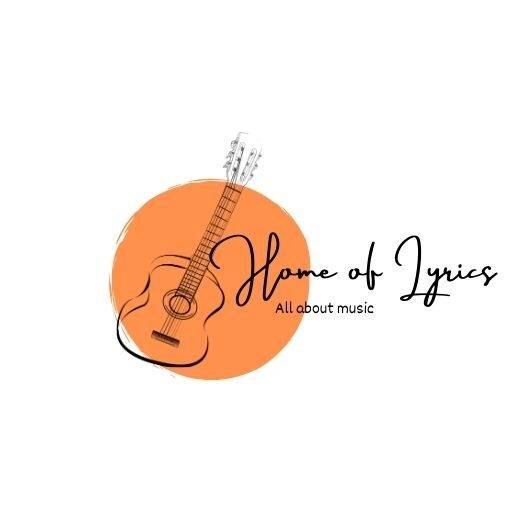
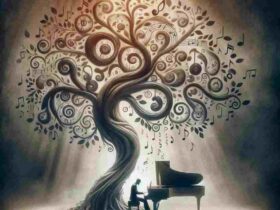
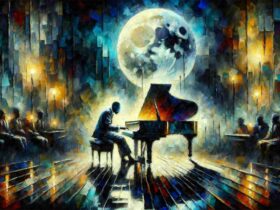
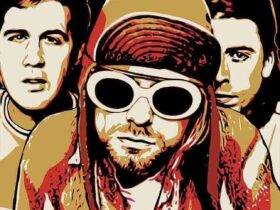

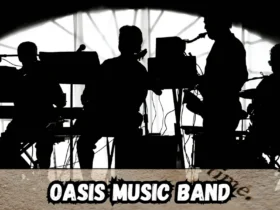

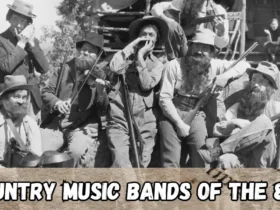
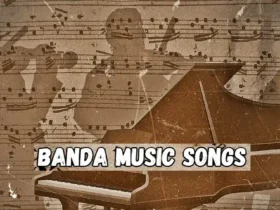
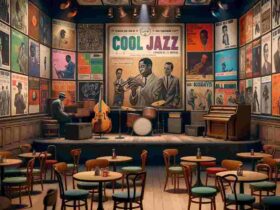

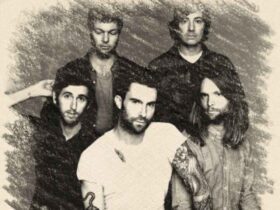

Leave a Reply